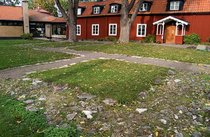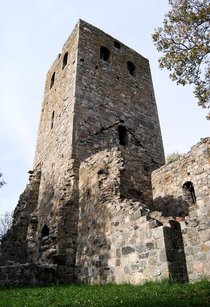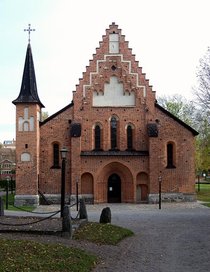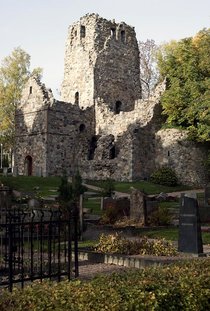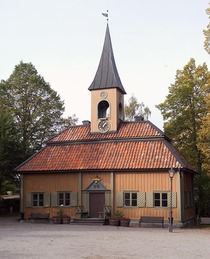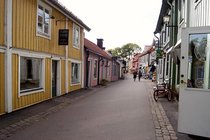Sigtuna
Sigtuna is the oldest existing town in Sweden. The town plan is from the Viking age, as are several runic inscriptions, while the churches are mediaeval, the buildings from the 18th and 19th centuries, and the gardens from the turn of the century around 1900.
The oldest archaeological layers from Sigtuna are known as “black earth”, and are up to 3 metres thick. They form an underground archive that can be interpreted by archaeologists. Recent extensive excavations have shown that the town was founded around 970, during the reign of King Erik Segersäll.
Sweden’s oldest town
Sigtuna was the first town in the realm of Sweden that started to take form during the late Viking era. King Olof Skötkonung started the minting of coins in Sigtuna around 995, using English coins as a model. During the complete century after the year 1000, Sigtuna was the only town in Sweden.
Many mediaeval churches
Right from the start, Sigtuna was a centre of Christianity. In the centre of the town, in the grounds of the Sigtuna Museum, it is possible to see the foundation of the Bishop’s Church from the end of the 11th century. This was the first stone-built church in the town, and was demolished in the 13th century.
There were no fewer than seven churches and their associated churchyards during the early Middle Ages. All of them, with the exception of the Bishop’s Church, were located along a single street behind an area with the oldest buildings. A number of runic inscriptions can be found behind the row of churchyards. St. Per’s Church was completed around 1100 on a rise in the western part of the early town. It is probable that this church can be directly associated with the power of royalty. St. Olof’s Church is approximately the same age and lies at what was then the eastern edge of the town. There is a spring here, which can probably be associated with the cult based on St. Olof, patron saint of the church. Investigations carried out in 2005 in the church of St. Olof revealed the foundations of an older church deep under the floor. All that remains of St. Lars’ Church from the middle of the 13th century are the ruins of a tower.
The Dominican monastery in Sigtuna was one of the first of its kind in Sweden. When it was opened in 1247, the monastery church of St. Maria was the first brick building in the Mälaren Valley. It became the protestant parish church at the reformation during the 16th century, while other churches in Sigtuna were allowed to decay.
From depression to town of learning
Following Sigtuna’s period of greatness in the early Middle Ages, Stockholm started to take over its role towards the end of the 13th century. The growth of Sigtuna tapered off, and a long period of obscurity followed. The town was razed by fire three times in quick succession during the middle of the 17th century. And by 1711, only 47 tax-paying citizens lived in Sigtuna. There were attempts by some enterprising mayors during the 18th century to pull the town out of the doldrums, but a new period of decline began at the end of the century. It wasn’t until the latter half of the 19th century that commerce started to gain in importance once again, and Sigtuna developed during the first part of the 20th century to a seat of learning with the arrival of the Sigtuna Foundation (part of the Church of Sweden), the Humanistiska Läroverket (a private school) and the layman academy for the Church of Sweden. New buildings have grown around the mediaeval town centre since the 1960s, and much of the modern development can be coupled with the expansion of Arlanda Airport, which lies in the eastern half of Sigtuna municipality.
A town plan from the Vikings
Despite being founded over 1,000 years ago, Sigtuna retains much of its original character. The route of the main street and the division of the town into blocks are largely as they were in the time of the Vikings. Today, the old town centre is dominated by low wooden buildings, mainly from the 18th and 19th centuries. The well preserved town hall from 1744 is particularly noteworthy.
The Sigtuna Museum has a permanent exhibition covering the origins and early history of Sigtuna, and displays a number of artefacts found during the many archaeological investigations in the town.
Links
Sigtuna museum
Sigtuna Municipality
Sigtuna Tourism
The closest public transport is the SL stop at Sigtuna bus station.

